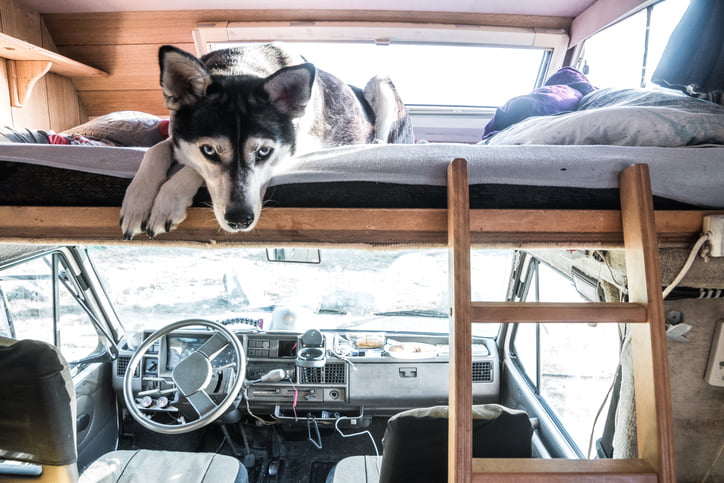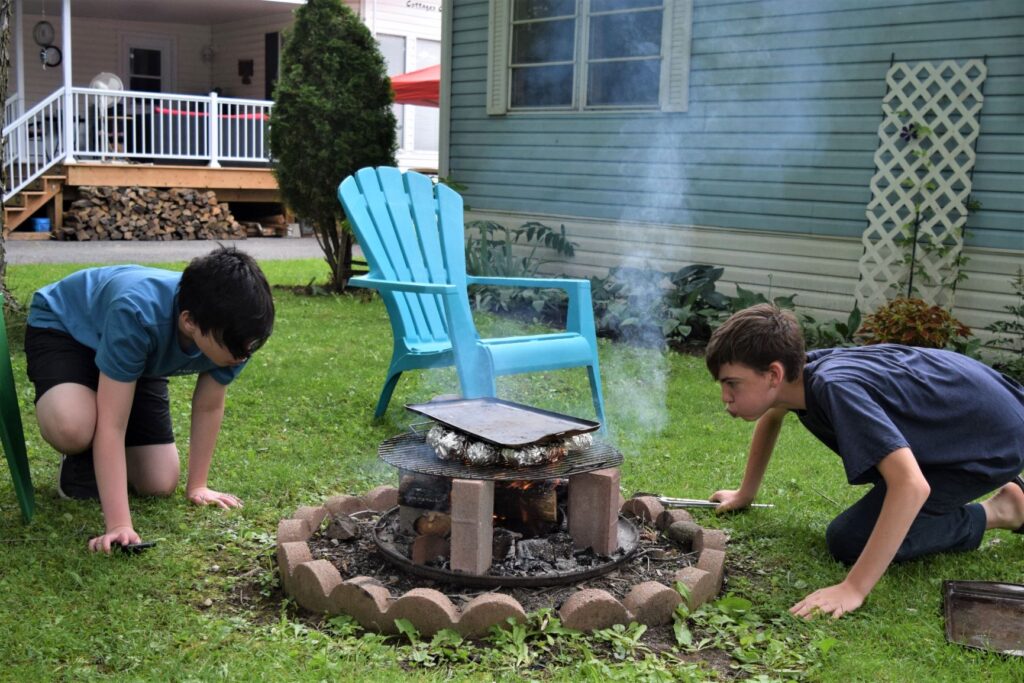What’s an adventure without your best friend? If you’re interested in RVing, you probably want to bring your pets — and you probably don’t want to pay to board them for weeks upon weeks. But travelling with pets can be a challenge, too. Here’s a guide for successfully RVing with your pet.
1. Get Your Pet Any Vaccinations
You should take your pet to the vet and make sure they’re up-to-date on any vaccinations before you hit the road. There are a lot of unpredictable events in the wild, and you don’t want to have to worry because your dog ran into a bat! At the same time, your vet can perform a wellness check and give you the seal of approval before you take off with your pet.
2. Think About How to Restrain Your Pet
You will need pet-friendly gates or crates to make sure that your pet stays in your RV when they need to. Some pets may be great at recall, but there are always dangers — think about the fact that a dog might not be able to identify a hot spring before trying to jump in. Soft gates that go around the RV doors can help.
3. Buy Collars and Microchips
Making sure your pet is microchipped is absolutely critical. If they get away far from home, they won’t know how to get back to you. The best way to get them back is to have a microchip that can be scanned. You should also make sure that your pets wear collars all the time and that they have clearly marked tags.
4. Make a “Pet-Friendly” Area
Where will your pet sleep? Eat? Drink? Find an area in your RV where your pet can feel at home. If you have a cat, you might want to put up scratching posts and perches. If you have a dog, you might want to create a den from an open crate, or give them a comfortable bed. Most animals have the urge to settle in a certain area—they want to be able to nestle into their “home.”
5. Do a Few Test Rides Close to Home
Before you go on a long journey, you may want to take a few laps around the block — so to speak. A short camping trip will tell you what you need to know about how well your pet does on a long journey. This will also ensure that any anxieties and kinks are worked out well before you go on a more adventuresome trip. It will also point out anything that you haven’t adequately pet-proofed, like drapes that are enticing to your kitties.
6. Check Your Destinations Beforehand
It’s easy to assume that every outdoor location is “animal friendly,” but that’s actually not true. Some areas that have had issues with pets (such as off-leash dogs disrupting the wilderness) may have restrictions on animals. Before you head to an RV park or other camping destination, make sure you check on and adhere to the rules. It’s possible you may just need to register your pet with an office or make sure that you have their vaccination records available.
7. Locate Emergency Vet Services
If you’re going to be camping in any specific area, print out a map of emergency vet services. You can even highlight vets around your route. This will ensure that you know exactly where to go if your dog, cat, or other furry friend gets in trouble while you’re travelling. Even a few minutes of time saved can help you during emergencies.
8. Think About Recreation
When animals don’t get enough mental stimulation, they start to get destructive. Consider what your pet is going to play with even when they’re cooped up in the RV. Likely, they’ll be getting a lot of attention and activity in the great outdoors. But do you have enough to keep them occupied on a rainy day?
9. Don’t Forget the Weather
Animals can’t control their temperature the way that people do. They’re very sensitive to temperature changes. Make sure that you have plans for exceptionally hot and cold days, and check to make sure that you’re AC and heater are running well.
Sure, there may be some complications if you’re RVing with your pet. But experiencing the great outdoors with your pet makes up for any frustrations. For more information about living the RV life, check out the Explorer RV Club.




